









































Midweek Updates 7 February 2024
Google Banner Ad
This week in Midweek Updates
Lack of top cover could be behind DR Congo helicopter attack.
Modise sidesteps Lekota question on serviceable SAAF fighters.
UN medals for SA airmen and medics.
South Korea donates MD500 helicopters to Kenya.
Tired of those old and sticky engine gauges? Kanardia has three different Engine Monitoring Systems to match your available panel space.
NTSB wants spin-recovery procedure added to Twin Commander POH.
Daher's 100th TBM 960 turboprop-powered aircraft is delivered to a first-time TBM owner in the United States.
Textron Systems' Aerosonde® UAS takes first flight aboard littoral combat ship.
Electra order book surpasses 2,000 aircraft with commitments from JetSetGo, LYGG, and Charm.
Mightyfly unveils its new 2024 Cento Aircraft.
Worldwide incidents and accidents.
This week in history - The first triple-triplane aircraft, and the first passenger-carrying aircraft is launched at Lake Maggiore,
Bonus video - Kit Planes for Africa
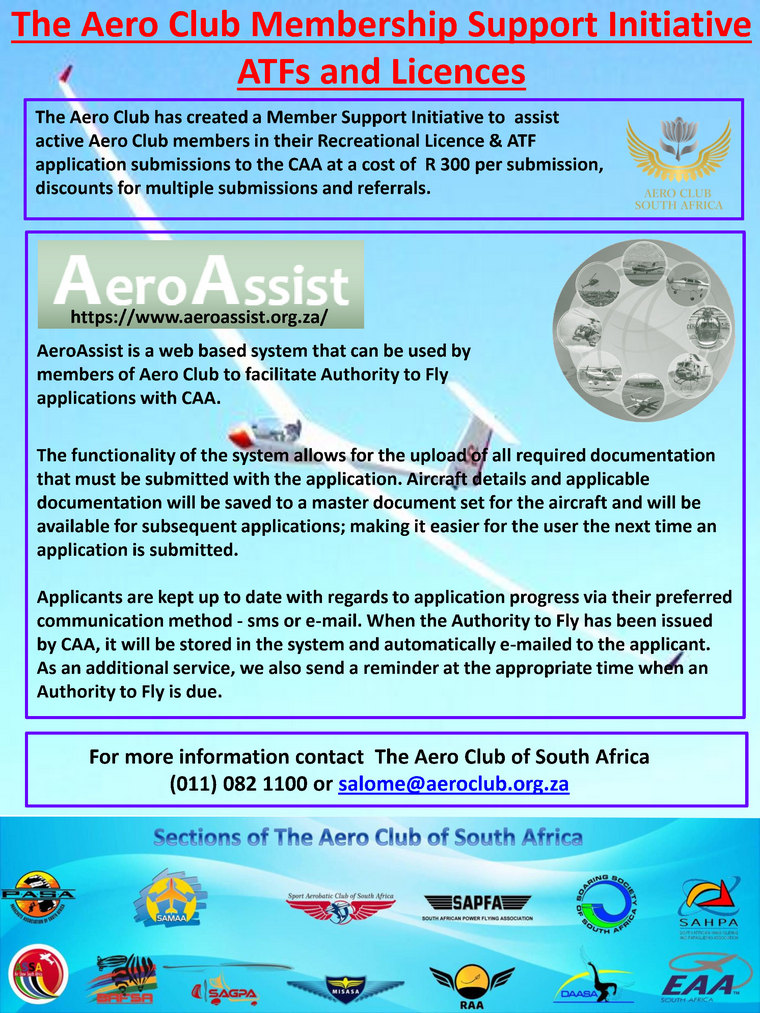
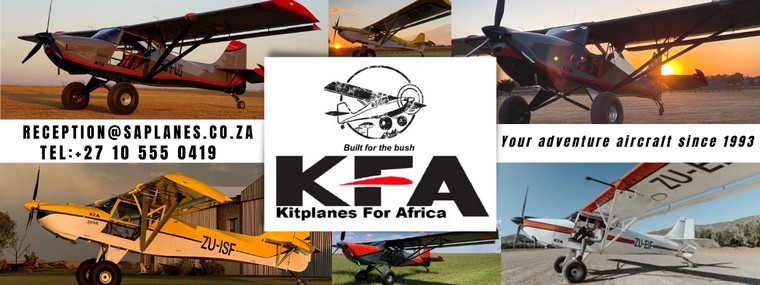


8 MayDay SA golf day and industry dinner Serengeti Estate. Contact WhatsApp 083 797 7001 Website: www.mayday-sa.org.za
12 to 14 African Air Expo and conference CTICC, Cape Town. Website: www.airexpo.co.za
17 EAA Chapter 322 fly-in breakfast to Kitty Hawk. Contact Neil Bowden E-mail: airadventuresa@gmail.com

2 SAA Museum Society Specialised Tour limited to nine adults. Contact E-mail: events@saamuseum.co.za Cell: 076 879 5044
8 DCA Industry Roadshow Stellenbosch, Cape Town. Contact Ms Charmaine Shibambo E-mail: shibamboc@caa.co.za
8 to 10 Aero Club Airweek venue Mideelburg Airfield. Contact Sandra Strydom E-mail: sandra@aeroclub.org.za Tel: 011 082 1100
9 ANR at Aeroclub Airweek - Middelburg Airfield.
Contact Iaan Myburgh email iaanmyburgh@gmail.com cell: 082 449 2531
15 DCA Industry Roadshow Mangaung, Free State. Contact Ms Charmaine Shibambo E-mail: shibamboc@caa.co.za
16 EAA Chapter 322 fly-in breakfast to Brits airfield. Contact Neil Bowden E-mail: airadventuresa@gmail.com
23 Stellenbosch Airshow - Fashkosh. Contact Sam Cell: 082 828 4553 or Anton Cell: 079 873 4567

6 EAA Chapter 322 monthly gathering at the EAA Auditorium
Contact Neil Bowden E-mail: airadventuresa@gmail.com
17 to 20 AERO Friedrichshafen 30th anniversary
Contact E-mail: info@fairnamic.com Website: www.fairnamic.com
20 EAA Chapter 322 fly-in breakfast to Eagle's Creek airfield
Contact Neil Bowden E-mail: airadventuresa@gmail.com



Kim Helfrich www.defenceweb.co.za
In the aftermath of the recent small arms attack on a SA Air Force (SAAF) Oryx helicopter attached to the United Nations (UN) peacekeeping mission in the Democratic Republic of Congo (DRC), the safety and capability of deployed South African military personnel and equipment has been questioned.
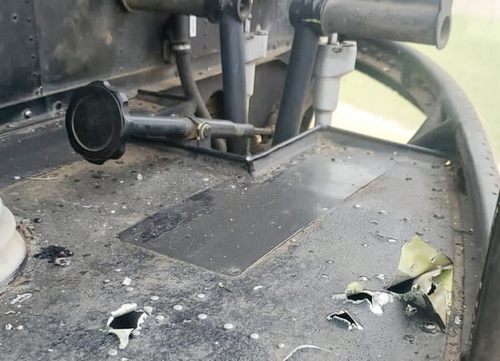
Democratic Alliance shadow defence and military veterans minister Kobus Marais said Friday's small arms fire fusillade at the medium transport helicopter brought home - again - the "diminished capability" of the service commanded by Lieutenant General Wiseman Mbambo.
"This event might have been averted had the ANC (African National Congress) not played a role in diminishing the capabilities of the SAAF," he said, pointing "specifically to the lack of at least two Rooivalk combat support helicopters" for - among others - supporting medevac flights. This he blames on Thandi Modise's Ministry of Defence (MoD) and SANDF Commander-in-Chief, President Cyril Ramaphosa.
African Defence Review (ADR) Director Darren Olivier raised the lack of top cover for helicopter sorties, be they medevac or personnel and equipment delivery, a year ago. He is on record as saying budget cuts and withdrawals leave MONUSCO helicopters without Mi-24 or Rooivalk escorts.
Friday's attack has not yet been claimed by any of the armed groups active in DRC with M23 the leading suspect.
The Oryx (tail number 1247) flown by a 22 Squadron aircrew was reportedly "badly damaged" with multiple rounds of unknown calibre ammunition hitting the cockpit, cabin and rotor blades with hydraulic system damage. The three-man aircrew, named in a Sunday report as majors Jannie Augustyn, Harvey Strauss and Sergeant Divan Adams, flew the rotorcraft to safe landing at a MONUSCO level three hospital. Pilot in command (PIC) Augustyn and a military medic were the only casualties in the Rwindi medevac sortie.


Kim Helfrich www.defenceweb.co.za
Mosiuoa Lekota, who was at the helm of South Africa's defence and military veteran's ministry at the time the Strategic Defence Procurement Package (SDPP) was finalised in the late 1990s, still shows an interest in what has happened to the sharp-end equipment he oversaw into service with the SA Air Force (SAAF) and SA Navy (SAN).
The COPE (Congress of the People) leader and public representative had to be content with an explanation not involving serviceable aircraft numbers.
Modise's response reads: "The Chief of the SA Air Force recently approved a seven-year plan (MTSF [medium term strategic framework] plus Plan 2030) with an end-state of an organisation which is affordable, sustainable and responsive. This plan seeks to ensure prime mission equipment (PME) will be held at the minimum level of capability maturity required with provision to optimise as and when the threat scenario changes".
"Plan 2030 Focus of Main Effort in so far as PME is concerned is the rejuvenation of core capabilities by means of essential life extensions, mid-life upgrades, and disposal management in order to reduce baseline costs."

"In FY2023/24 the National Treasury allocated an additional R1 billion for the upgrade and/or acquisition of the Medium Air Transport Capability. This funding will be utilised to conduct aircraft servicing, address the urgent regulatory and obsolescence issues faced by the current Medium Air Transport Capability and procure additional spares and engines. This funding only partially addresses the Medium Air Transport Capability Fleet Requirement and is not sufficient to acquire replacement aircraft".
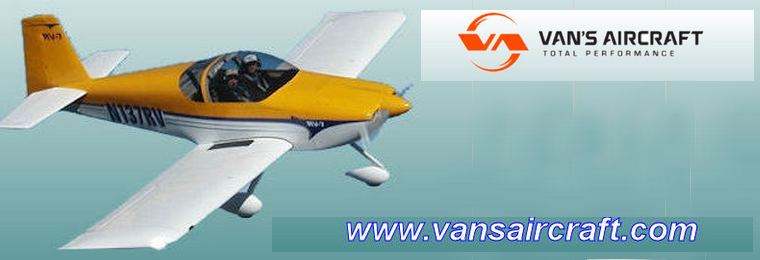
UN MEDALS FOR SA AIRMEN AND MEDICS
www.defenceweb.co.za
Meritorious service by South African peacekeepers in various air and medical mustering's was rewarded with the appropriate United Nations (UN) medal at their Goma base in the Democratic Republic of Congo (DRC).
The medal parade last month (December) saw 70 SA Air Force (SAAF) and SA Military Health Service (SAMHS) personnel from the Composite Helicopter Unit (CHU) and Area Medical Evacuation Team (AMET) presented with the UN service medal. The medal honours were performed by MONUSCO Force Chief of Staff (CoS), Brigadier General SB Gwaya, representing Force Commander, Lieutenant General Otávio Rodrigues De Miranda Filho.
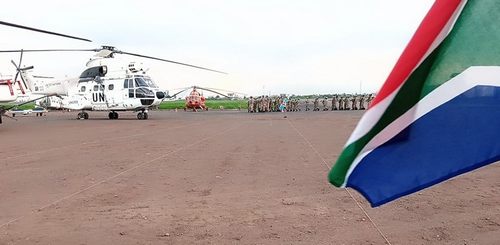
CHU Officer Commanding Lieutenant Colonel L Mahada had an "honours list" for military personnel attached to the MONUSCO Goma base in the form of certificates of appreciation. Recipients included the Force Commander's officer, Force Provost Marshal, Staff Officers attached to the expanded joint verification mechanism (EJVM) and the Senegalese formed police unit 1 (SENFPU1).
Last September saw another batch of South African military men and women from 10 SA Infantry (SAI) Battalion and TIU (Tactical Intelligence Unit) III all honoured with the UN service medal.
Their medals, as is standard UN practice, are inscribed with the words "In service of peace".
Medal parades normally take place when a country deployment to MONUSCO either ends or is rotated.
With the DRC mission set to wrap up operations in December at the request of government, a number of medal parades can reasonably be expected as troop and equipment withdrawals, already underway in eastern DRC, continue.
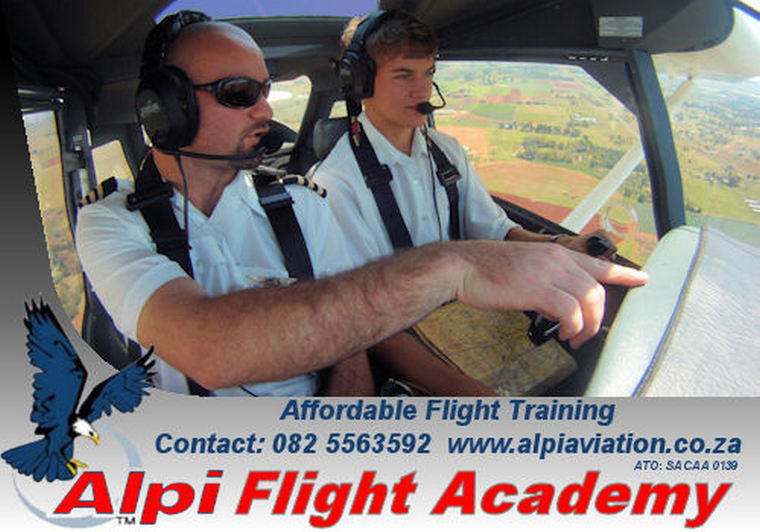
Guy Martin www.defenceweb.co.za
South Korea is giving Kenya 16 retired MD500 helicopters to be used on United Nations (UN) peacekeeping missions, with the first six being refurbished ahead of delivery to the East African nation.
The Republic of Korea (ROK) Ministry of National Defence said the first six aircraft were on 21 December transported from Army Logistics Command's General Maintenance Depot in Jinhae to the United States, in cooperation with the US State Department.
The defence ministry explained that the US plans to transfer the helicopters to Kenya as soon as maintenance is completed, and Kenya is expected to dispatch a helicopter unit with the United Nations.
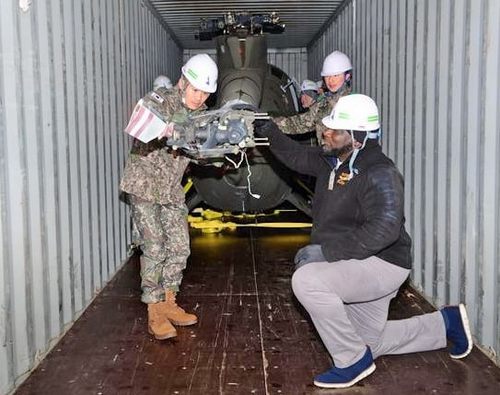
"This helicopter donation is in line with our willingness to contribute to promoting international peace and security ahead of our country's inauguration as a non-permanent member of the Security Council for the 2024-25 term. It is evaluated as a clear demonstration that cooperation between the two countries has expanded worldwide," the Ministry continued.
"Our government plans to work closely with the United States and the United Nations to quickly complete the donation of the remaining 10 helicopters, while continuing to further expand its contribution to promoting international peace and security, including UN peacekeeping operations," the Ministry concluded.
Korean Air's aerospace division built some 280 MD500s under license between 1976 and 1984, but these are being replaced by newer aircraft, including the Korea Aerospace Industries (KAI) Light Armed Helicopter (based on the Airbus EC155 Dauphin). The first examples of the Light Armed Helicopter are expected to be delivered this year.
Kenya's military already operates the MD500, with 40 delivered by the United States between 1980 and 1985, along with 2 100 TOW anti-tank missiles. These were recently augmented by six new MD530Fs delivered from the US in December 2019. They were acquired to assist with operations in support of the AMISOM mission in Somalia.
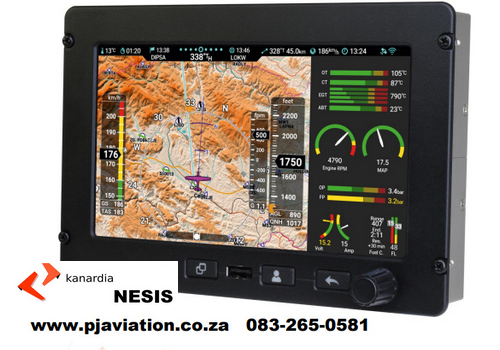

Kanardia has three different Engine Monitoring Systems to match your available panel space.
The DAQU can accommodate up to 24 sensors and has an integral MAP sensor. Connection direct to the ECU of some engine types is possible, reducing installation wiring complexity even further.
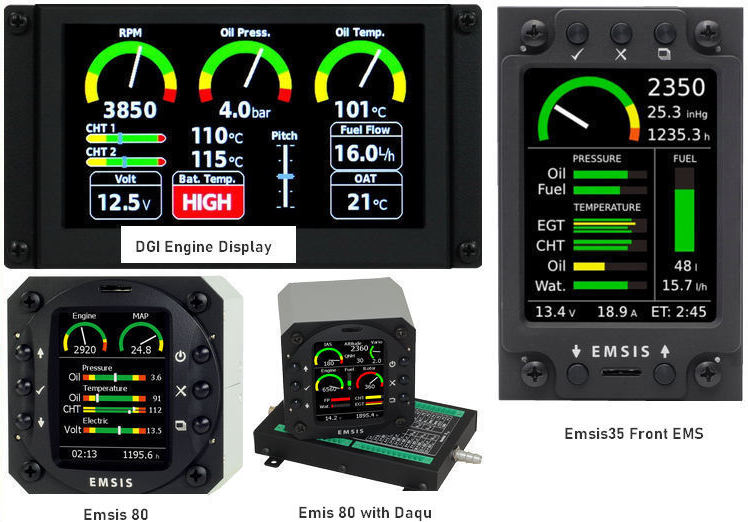
So what are the advantages of Kanardia's EMS ?
• Slim line
• Low cost
• Easy to install
• Low power consumption
• Futureproof expansion and data sharing to other devices via CAN bus
• Proven over the past 18 years
• Upgradeable through firmware updates
• Unbelievable bright display
• No parallax errors when reading from extreme angles
• Log book function (EMSIS only)
I use Kanardia in my aircraft - why don't you?
Mobile : 083 265 0581
www.pjaviation.co.za
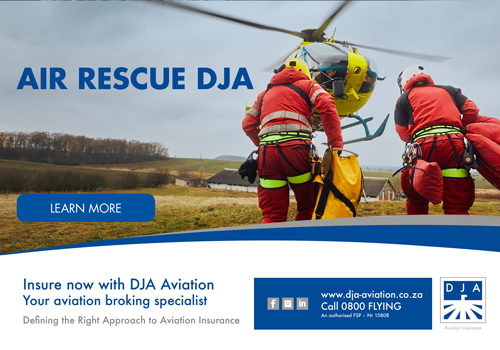

NTSB WANTS SPIN-RECOVERY PROCEDURE ADDED TO TWIN COMMANDER POH
As a result of its investigation of the fatal crash of a Rockwell 690B twin-turboprop on Sept. 28, 2021, the NTSB has issued a safety recommendation to Ontic, which owns the Twin Commander Aircraft product line, to add a spin-recovery procedure to the model 690 and 690 A/B pilot operating handbook (POH). The 690C/D models' POH already has such a procedure.
The accident took place after departure from Wisconsin's Rhinelander-Oneida County Airport. After levelling off at 16,100 feet and accelerating to 209 knots groundspeed, the 690B decelerated to about 93 knots groundspeed and descended 500 feet. According to the NTSB, "The airplane subsequently entered a rapid descent and a right turn. 'Mayday, mayday, mayday' and 'we're in a spin' transmissions were broadcast to air traffic control. A witness, who was located about one mile from the accident site, observed the airplane in a nose-down attitude, descending at a high rate of speed, and spinning about its longitudinal axis."
According to the aircraft performance study for this accident, the airplane pitched down in excess of 30 degrees and descended at a rate that reached 20,000 fpm. About the time that the airplane pitched down, the estimated normal load factor decreased from about 1.6 g to less than 1 g (normal load factor is the ratio of the lift of an aircraft to its weight). A rapid decrease in normal load factor is consistent with a stall when the wing exceeds its critical angle of attack."
The probable cause of the accident, the NTSB concluded, was "the pilot's failure to maintain adequate airspeed, which caused the airplane to exceed its critical angle of attack and enter an inadvertent stall and spin."
In its investigation of this accident, the NTSB noted five other Twin Commander accidents "in which the pilot did not recover the airplane from a spin." Although the later model 690C and 690D POH does contain a spin-recovery procedure, the 690 and 690 A/B POH only cautions pilots that "acrobatic manoeuvres, including spins, are unauthorized.
"The NTSB recognizes that the Twin Commander 690 airplane series was certificated in the normal category; thus, it did not undergo spin testing and, therefore, pilots shouldn't be intentionally performing spins. However, it is possible pilots could unintentionally enter a spin following a stall, similar to this accident. Accordingly, pilots should have access to all pertinent information to promote safe flight (including spin-recovery techniques). Further, because Twin Commander has already documented this procedure in the POH for the 690C and 690D models, the NTSB believes it is prudent to include the spin-recovery procedure, appropriate to each model, in the POHs for the 690, 690A, and 690B models as well."
According to Ontic COO Brian Sartain, "Twin Commander is reviewing the NTSB's recommendations. The safety of Twin Commander pilots and their passengers is of paramount importance to Twin Commander and Twin Commander takes all NTSB's recommendations seriously. Twin Commander is currently reviewing those recommendations and will take appropriate action."
Twin Commander built five hundred and forty-one 690 and 690 A/B models and one hundred and seventy-eight 690C/D models, according to information that the company provided to the NTSB.


Daher today announced the delivery of its 100th TBM 960, which was provided to a Californian businessman who is stepping up from a piston-engine airplane to this top-of-the-line member of the high-speed, turboprop-powered TBM aircraft family.
"My home base is near Santa Maria on California's Central Coast, which has very limited commercial airline service, so having a personal airplane is extremely valuable as I continue to develop my business," Kaseff explained. "When I decided to upgrade from a piston-engine airplane to a high-performance aircraft, I searched the market and found that the TBM 960 was the best choice for me."
"The TBM 960 offers the efficiency I was looking for in terms of speed, range and airport access. And its turboprop engine generates less carbon emissions than a jet."
The TBM 960 is the latest evolution of Daher's pressurized single-engine turboprop aircraft product line. Launched commercially in April 2022, it is the fifth evolution in the TBM 900 series, and benefits from today's turboprop technology and digital power.
"We are particularly proud that the 100th TBM 960 has been received by a newcomer to the TBM community," said Nicolas Chabbert, the Senior Vice President of Daher's Aircraft Division. "It confirms that the TBM 960 is the quintessential TBM - meeting the expectations of entrepreneurs like Kevin Kaseff, who require a safe and efficient individual transportation tool."
Key TBM 960 features include the PT6E-66XT turboprop engine - purpose-built by Pratt & Whitney Canada for this aircraft; and Hartzell Propeller's five-blade composite propeller with the Raptor™ lightweight hub. Both the engine and propeller system are linked to the TBM 960's dual-channel digital Engine and Propeller Electronic Control System (EPECS).
The EPECS optimizes powerplant performance from the engine's startup to landing, while reducing pilot workload by integrating all functions and protecting the engine's life. It also enables the pilot to fly with more precise settings. At Daher's recommended cruise setting of 308 kts., the TBM 960's fuel consumption is only 57 U.S. gallons per hour - a 10 percent fuel economy compared to the maximum cruise setting for more sustainability.
Daher's use of digital power for the TBM 960 extends into the aircraft's Prestige cabin, featuring an all-new environmental control system produced by Enviro Systems Inc. Other interior enhancements include LED ambience strip lighting integrated into both sides of the overhead ceiling panel, and electronically-dimmable windows - all controlled by a Passenger Comfort Display (PCD). Other enhancements in the cabin's style and comfort are ergonomically enhanced seats, USB-A and USB-C power plugs, along with individual cupholders and headset hangers for each occupant.
The TBM 960 retains the TBM's e-copilot® functions: icing protection system; flight envelope monitoring through the Electronic Stability and Protection (ESP) and the Under-speed Protection (USP) systems; the Emergency Descent Mode (EDM) function; as well as the game-changing HomeSafe™ emergency autoland system.

In June, Textron Systems was awarded a contract by the U.S. Navy's Naval Air Systems Command Center (NAVAIR) to provide UAS operational support to one Freedom Class and two Independence Class LCS variants.
The Aerosonde UAS will support the LCS missions of forward presence, maritime security, sea control and deterrence with overwatch and extended intelligence, surveillance and reconnaissance (ISR) services with enhanced payloads. The Independence Class LCS marks the fifth class and seventh total ship the Aerosonde system has been contracted to support.
"Teaming an uncrewed Aircraft System with a crewed ship is a force multiplier for the ship's existing mission sets, which we've seen with our Aerosonde UAS operating from DDG and ESB- class ships," said Wayne Prender, Senior Vice President of Air Systems. "The expansion of the Aerosonde system's services onto the LCS extends the capability of the various mission packages employed by the ship."
The Aerosonde UAS offers multi-mission capability built upon a family of systems which have amassed over 650,000 flight hours over more than 10 years. The system is equipped for multiple payload configurations with both vertical take-off and landing (VTOL) and fixed-wing options.


Electra, a next-gen aerospace company with a mission to help decarbonize aviation and open new air transportation markets, today announced its achievement of pre-order sales of over 2,000 electric short take-off and landing (eSTOL) aircraft with a market value exceeding $8 billion.
Electra passed the order milestone on January 19th when it signed a Letter of Intent (LOI) with JetSetGo Aviation Services Private Ltd. ("JetSetGo") at Wings India 2024, in addition to recent LOIs with travel industry leaders LYGG ("LYGG") in Finland and Charm Aviation, LLC ("Charm") in New York City to introduce Electra's eSTOL aircraft in their respective markets.
Electra's order book underscores strong interest from a broad array of flight operators across diverse markets. These operators are opting for Electra's eSTOL aircraft to offer a more convenient and sustainable air travel experience for their customers. Whether facilitating short-distance flights from urban vertiports, covering longer journeys of up to 500 miles to regional airports, or flying adventure tours or medical missions to locations without ground infrastructure, Electra's partners value the unparalleled flexibility, safety, and economics of Electra's eSTOL aircraft.
JetSetGo Aviation Services Partnership
JetSetGo, India's first marketplace for private jet and helicopter charters, operates India's largest on-demand aircraft fleet. Electra and JetSetGo are collaborating to explore relevant markets and identify new routes using eSTOL capabilities. These routes will establish vital connectivity between India's cities and regional transportation hubs for communities underserved by flight.
"India's geography and demographics make it an ideal launch market for Advanced Air Mobility (AAM). We want to lead the transformation of urban and regional connectivity and believe Electra is the right partner with the technology to make this vision a reality," remarked Kanika Tekriwal, JetSetGo's Chief Operating Officer (CEO) and co-founder.
"JetSetGo continues to be a first mover in India's private aviation market by embracing AAM. Electra is committed to partnering with JetSetGo for the long term to grow regional transportation markets and help bring jobs and vital economic growth to communities in India," said Marc Ausman, Electra Chief Product Officer.
LYGG Partnership
Finland-based LYGG is an on-demand platform for regional flights mainly at airports outside metropolises in Nordic and European travel markets. LYGG will offer its operators the purchase of Electra's eSTOL planes through the Hybrid as a Service model, providing financing and profitability for operators.
"Our partnership with Electra ensures that we are in a global pole position in the sustainable aviation revolution. Electra's eSTOL capability allows us to rewrite the definition of direct connections for environmentally conscious business travelers using existing airfields closer to city centers, reducing valuable time spent in the air," stated LYGG CEO Roope Kekäläinen.
"LYGG is committed to meeting the rising demand of its passengers to travel with the smallest carbon footprint possible, and Electra is excited to help make that possible," said Ausman. "Our climate-friendly hybrid eSTOL aircraft will fly regional distances at reduced operating costs that enable LYGG to serve existing city to city regional routes as well as open up valuable new destinations."
Charm Aviation Partnership
Charm, one of the largest helicopter tour operators in the Northeastern United States, has joined forces with Electra to introduce sustainable eSTOL aircraft to the heliports and vertiports of Manhattan. Electra's eSTOL aircraft can operate in the available space, require no charging infrastructure, and provide a quieter, more cost-effective solution per seat mile than traditional helicopters and eVTOLs.
"With Electra's eSTOL aircraft, Charm Aviation will offer travelers a much greater choice of travel destinations, while ensuring that we're a good neighbor to our surrounding community with clean, safe flight operations," stated Cait Ephraim, President of Charm Aviation.
"Electra's aircraft has the range to transform New York City's heliports from urban flight terminals into regional transport hubs with direct flights to cities and smaller communities along the East Coast," Ausman noted.
Electra is currently developing a hybrid eSTOL aircraft that will enable rapid, safe, and affordable transportation of both passengers and cargo within urban and regional networks. The plane's unique ability to take off and land in spaces as small as a soccer field, coupled with a cruising speed of 175 knots and in-flight battery recharging, enables flight operations from places previously inaccessible by flight including converted parking lots, barges, and very short landing strips. Initially designed to accommodate up to nine passengers or 2500 pounds of cargo, the piloted fixed-wing aircraft will cover distances of up to 500 miles in all weather conditions.

MightyFly unveiled yesterday the third generation of the Cento aircraft, an autonomous hybrid eVTOL cargo aircraft designed to carry one hundred pounds of cargo for six hundred miles.
The new eVTOL present improved operational efficiency through MightyFly's Autonomous Load Mastering System (ALMS) component, which will enable the aircraft to autonomously open and close its cargo bay door, receive and eject packages into and from the cargo bay opening, move and secure packages in the cargo bay via an internal positioning and locking system, and sense and compute weight and balance.
All of these tasks will be done autonomously, without requiring an operator to reposition the packages inside the aircraft, which will help minimize the ground operation resources required to run and operate the MightyFly autonomous aircraft. MightyFly is currently working with Agility Prime and Air Mobility Command in the development of the ALMS feature to solve the U.S. Air Force's most pressing autonomous aerial logistics needs.
Additionally, MightyFly's third generation aircraft has been designed to accommodate a relatively large range of payloads' centre of gravity, which allows for a high degree of variance in cargo contents, densities, constitutions, loading order, and tie-down positions. This design attribute is expected to be a key technology differentiator for the Cento platform and its utility to be extremely valuable and competitive in the market.
The aircraft's cargo bay is significantly larger than its second-generation predecessor, the size of which was set based on extensive market research to optimize the number of packages for the 100 pounds payload capability. This enlarged cargo bay will allow the delivery of larger packages and goods, including the traditional cooler boxes used to transport donor organs for transplantation and blood bags. It will also benefit additional use cases and businesses in the industries of logistics, manufacturing, healthcare, pharmaceutical, retail, automotive, and oil and gas, as well as organizations performing humanitarian and disaster relief work, and government's defence teams executing various logistics and resupply missions.
The unveiling event, hosted at MightyFly's headquarters in San Leandro, CA, also featured a few stationary demonstrations of the aircraft's capabilities to a crowd of partners, investors, potential customers, and government representatives.
"We are very excited to show everyone the tremendous work and ingenuity performed by the MightyFly team throughout the last year, and to unveil the 2024 Cento that couple's innovation with efficiency in design, maintenance, and operation, bringing to the world the key to transform the expedited logistics market," said Manal Habib, co-founder and CEO of MightyFly. MightyFly's new eVTOL will revolutionize industries such as manufacturing, retail, and healthcare, and will transform life in rural and remote areas. "All of us at MightyFly are extremely excited to be working at the forefront of a new era of automation and innovation."
The event also included a presentation by one of MightyFly's investors, Tim Draper, Founding Partner of Draper Associates, who spoke about the tremendous potential of the 2024 Cento and autonomous eVTOLs to transform expedited logistics.
"How exciting to see the 2024 Cento come to life! A few months ago, I saw the team working on its design and starting to manufacture its first parts. The vehicle you see today is a testimony of MightyFly's talent, creativity, innovation, and decades of industry expertise. This technology will help save lives and solve painful logistics needs of businesses around the globe," said Draper.
MightyFly concluded production of its third-generation aircraft in early January 2024 and will begin its aircraft qualification tests, which include a test plan previously followed for its predecessor aircraft, in February.
In the fall of 2024, MightyFly will publicly debut its autonomous cargo aircraft delivery flights in Michigan, demonstrating point-to-point autonomous delivery use cases to partners and potential customers.
The company is also scheduled to demonstrate its autonomous loading, unloading, and balancing of packages capability to the U.S. Air Force in early 2025 and to perform additional Proof of Concept (POC) programs.



21 JANUARY 1921

Only one example of this aircraft, designed by Italian aviation pioneer Gianni Caproni, was built by the Caproni company. It was tested on Lake Maggiore in 1921: its brief maiden flight took place on February 12 or March 2. Its second flight was March 4; shortly after take-off, the aircraft crashed on the water surface and broke up upon impact. The Ca.60 was further damaged when the wreck was towed to shore and, in spite of Caproni's intention to rebuild the aircraft, the project was soon abandoned because of its excessive cost. The few surviving parts are on display at the Gianni Caproni Museum of Aeronautics and at the Volandia aviation museum in Italy.
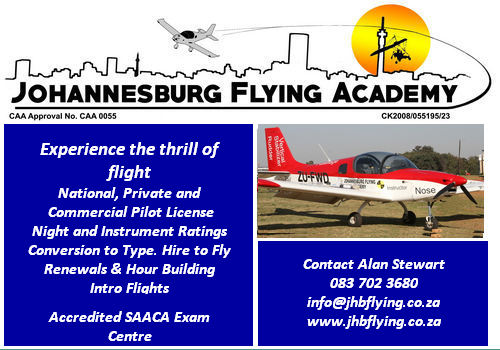

Clearwater, FL: South Africa: A Beechcraft V35B Bonanza crashed into a mobile home park in Clearwater, Florida, when approaching Clearwater Airpark (CLW/KCLW), and a post impact fire ensued. The pilot and two people on the ground perished and the aircraft and a mobile home were destroyed by fire. The ATC recording shows that the pilot was on approach and trying to align with runway 34 at KCLW. The pilot then mentions that he wants to change frequencies to activate the runway lights, and a few seconds later, he cancels the IFR clearance. The pilot returns to the frequency later and reports that he was "losing engine".
USA, Coatesville, PA: The Grumman GA-7 Cougar, N887CC, impacted terrain shortly after take-off from runway 29 at Coatesville-Chester County Airport, PA (CTH). The pilot was killed. ADS-B data show N887CC making a descending right-hand turn shortly after take-off from runway 29. The aircraft had been hangared at Marshall-Brooks Field Airport, Michigan, USA, following a prop strike incident and was put up for sale. After purchase, the rebuilding work was documented on the 'Rebuild Rescue' YouTube channel. ADS-B data show that it was first test flown after repairs on December 15, 2023. It was subsequently ferried to CTH that same day. The accident was the first flight out of CTH after arrival.
Australia, Hervey Bay, Fraser Coast, QLD: A Cessna plane crash landed on a beach in Hervey Bay, Fraser Coast, after a technical malfunction. The pilot was injured. The airplane was destroyed by fire.
USA, near Buchanan Field Airport (CCR/KCCR), Concord, CA: Eye witness accounts state that a Van's RV-6, N30AK, began to experience engine failure on take-off 19R. The pilot began to pitch the nose down, began regaining engine power and made an attempt to turn back to the runway, at this point the pilot experienced a stall into spin. Where it was destroyed impacting nose first into an intersection south of Buchanan Field Airport (CCR/KCCR), Concord, California. The sole pilot onboard sustained fatal injuries.

Kit Planes for Africa

Google Banner Ad
 |
 |
 Copyright © 2024 Pilot's Post PTY Ltd
The information, views and opinions by the authors contributing to Pilot’s Post are not necessarily those of the editor or other writers at Pilot’s Post.
Copyright © 2024 Pilot's Post PTY Ltd
The information, views and opinions by the authors contributing to Pilot’s Post are not necessarily those of the editor or other writers at Pilot’s Post.